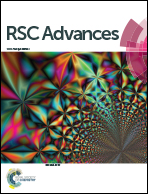Electronic band structure and specific features of AA- and AB-stacking of carbon nitride (C3N4): DFT calculation
Abstract
The state-of-the-art all-electron full potential linear augmented plane wave based on density functional theory was applied for calculating the structural, electronic band structure, effective mass, density of state, and valence electron charge density of AA- and AB-stacking of carbon nitride (C3N4). Calculations were performed using four schemes, namely local density approximation (LDA-CA) by Ceperley–Alder, generalized gradient approximation developed by Perdew Burke and Ernzerhof (GGA-PBE), Engel–Vosko generalized gradient approximation (EV-GGA) and the recently developed modified Becke–Johnson (mBJ) potentials. The calculated band structure and total density of states verify the semiconducting nature of the two configurations with band gap of about 2.589 eV and 2.990 eV for AA- and AB-stacking of C3N4. The effective mass ratio of electron, heavy hole and light hole were calculated for both AA- and AB-stacking. The upper valence band in AB-stacking is much flatter as compared to AA-stacking, and elucidates a dramatic increase in the effective mass ratio of heavy holes which cause a reduction in group velocity of the wave packet and consequently decrease the mobility of the charge carrier. The partial density of state shows the variation in the orbital state and its strength as one moves from AA- to AB-stacking. The strong hybridization among the orbitals of both stacking (AA- and AB-) shows covalent nature of the bonds. The calculated valence electron charge density contour shows the prevailing covalent nature of C and N bonds with negligible percentage (8.08%) of ionicity.


 Please wait while we load your content...
Please wait while we load your content...